Remote Control Mobile Lifebuoy
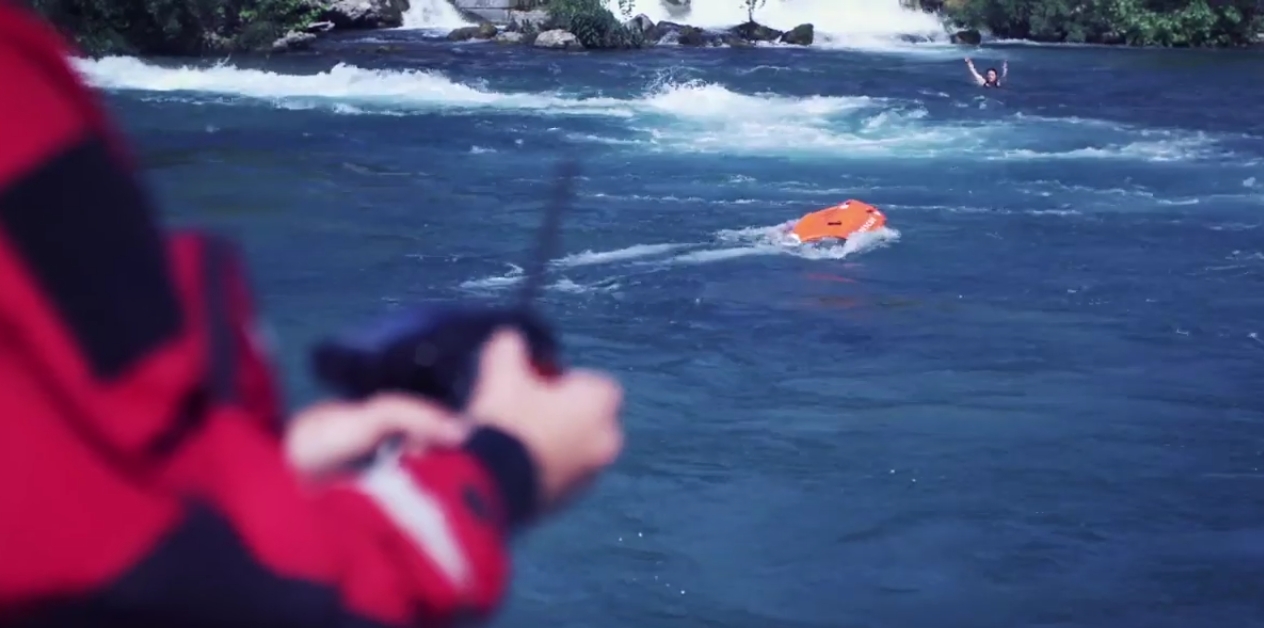
Dolphin 1 is a small guided life buoy that can help in trouble on water faster in some cases than a lifeguard. The device can glide through water at a speed of up to 15 km / h, and its operator can monitor it and control it at a distance of up to 500 meters.
Problem
In the event of accidents on the water, time goes by seconds, and organizing the rescue of people, even for trained rescuers, requires a clear and quick reaction and quick execution of a mechanical set of certain actions, which started on time, without losing precious minutes that might not be enough for a successful rescue.
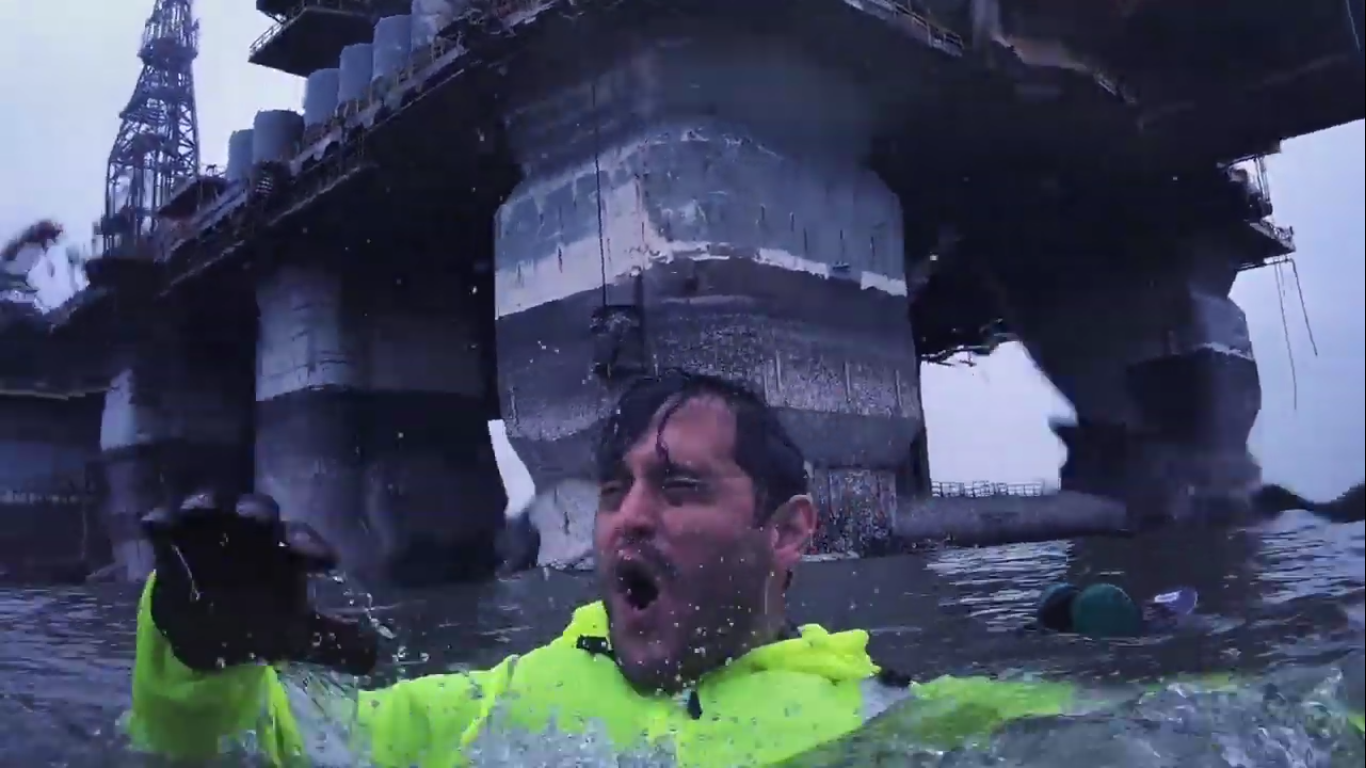
Also, rescuers do not always have the opportunity to quickly respond to the situation and get to the drowning one, since the site of a water accident can be far away and not swim there quickly, and launching a rescue boat into the water also takes considerable time, and it doesn’t always exist.
Decision
To save the drowning, more and more often begin to use small robotic structures that can be controlled remotely.
One such device is the Dolphin 1 mobile lifebuoy.

This is what the prototype of this device looked like before the start of industrial production:
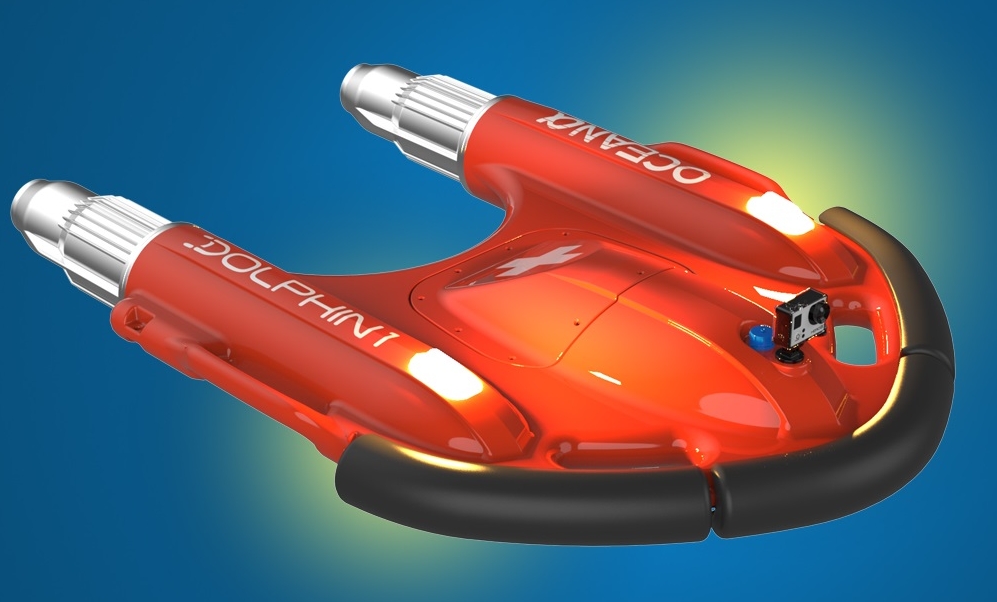
After a series of test tests and design improvements, OceanAlpha engineers were able to realize the full functionality of the mobile lifebuoy, which can now be used to organize urgent life-saving actions.
Specifications of Dolphin 1 Smart Remote Water Rescuer:
- damage-resistant, durable plastic bright orange body (capable of supporting the weight of an adult, and its design is able to keep two people afloat for a sufficient time until help comes);
- on the body there is a special front soft bumper to minimize accidental impact on the injured person in the water;
- on the case there are two handles near the nose for carrying and special ropes at the edges - a person in water can freely and safely grab onto these elements;
- on the housing there are two protected fog lamps for visual identification of the device in case of poor visibility or fog;
- device size: 115x83x21cm (LxWxH) - compact enough with average dimensions for such tasks (designed so that a weary swimmer can lie on it like on a board)
- curb weight 13 kilograms (convenient to pick up and immediately throw into water for short distances and from small heights);
- two electric water-jet propulsors with a protective metal casing each, such protection of the propulsors prevents algae and debris from getting inside their mechanisms, and also ensures the safety of people during rescue;
- two separate rechargeable batteries, which are located in special protective compartments inside the case, which allows the power supply system and device movers to function even with minor damage to the case;
- buoyancy 22 kilograms (approximately 20% of the adult weight);
- battery life of engines on a single charge 30 minutes;
- the maximum speed is 15 km / h (9.3 mph), when transported on the body of the person to be saved, the speed is less and depends on how the person is fixed on the device;
- operating range of the control system is up to 500 meters \ 1640 feet (operator's remote control <-> device).
Top view:
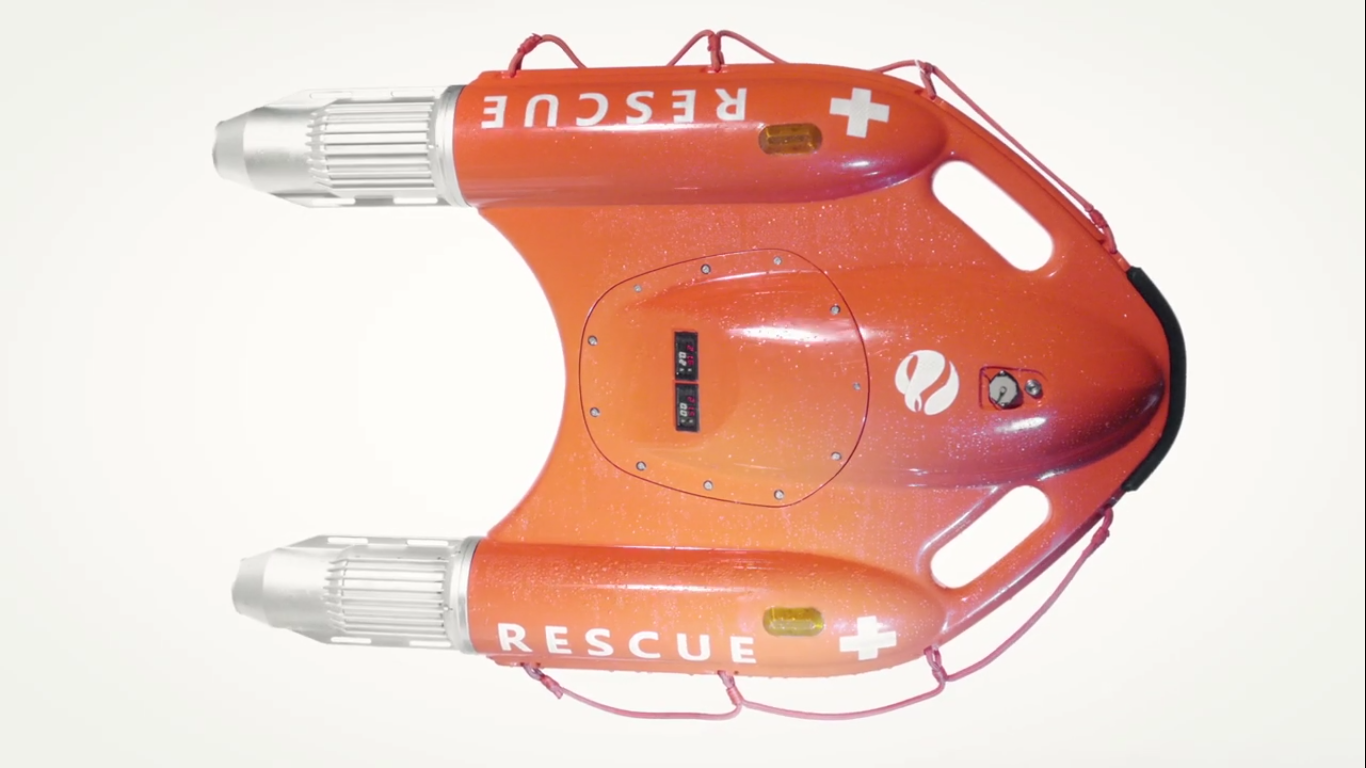
Bottom view:

Layout of water jets:

Location of protected battery compartments:

Remote control:
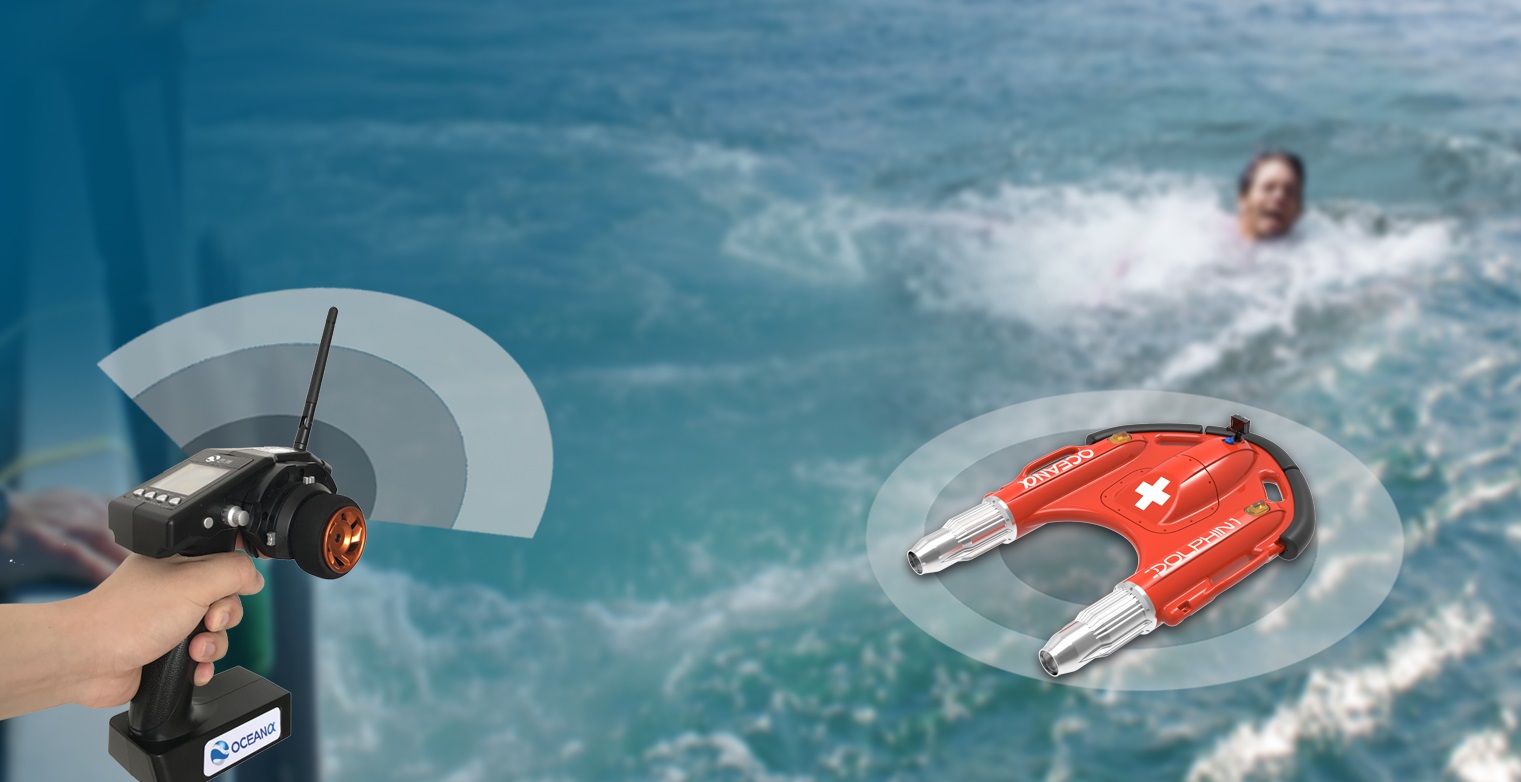
Propulsion nozzle:
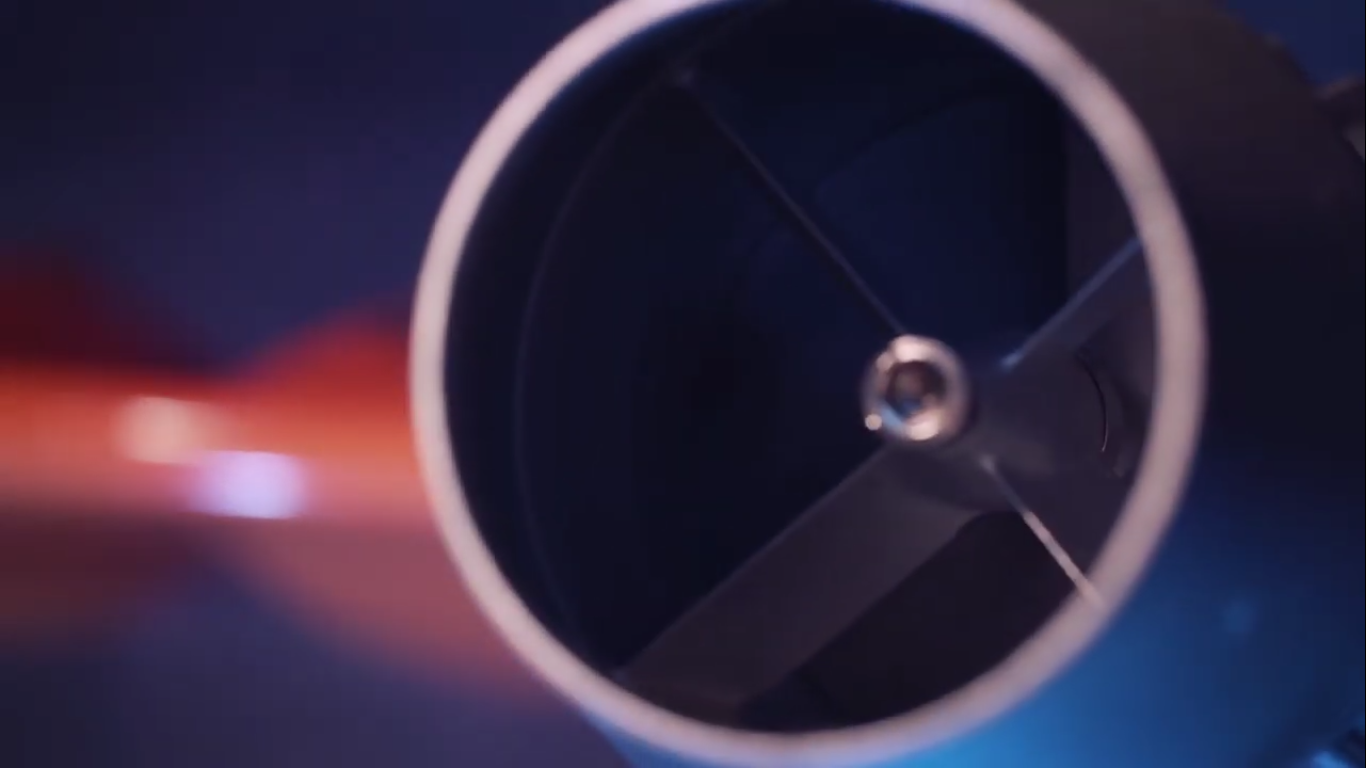
On the top of the device there are charge and speed indicators for each engine separately, as well as manual buttons for the case when the lifeguard (operator) with the remote control is located outside the signal reception zone, and the rescued person can independently direct “Dolphin 1” to sail in the desired direction.

Moreover, in the first versions of the device there were no indicators and buttons:
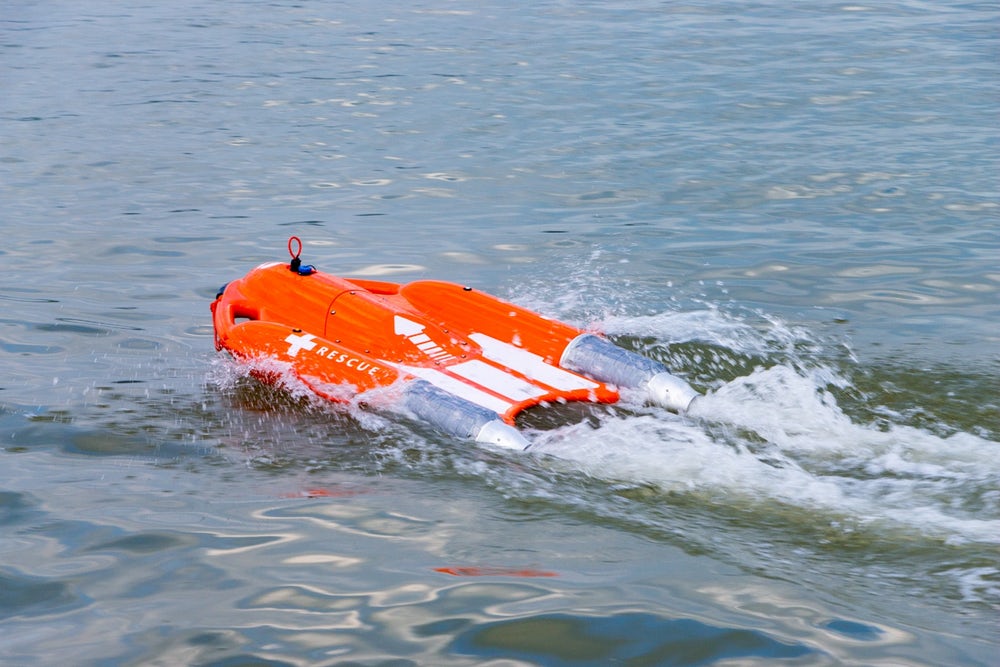
Then the engineers began to try their different arrangement on the case:
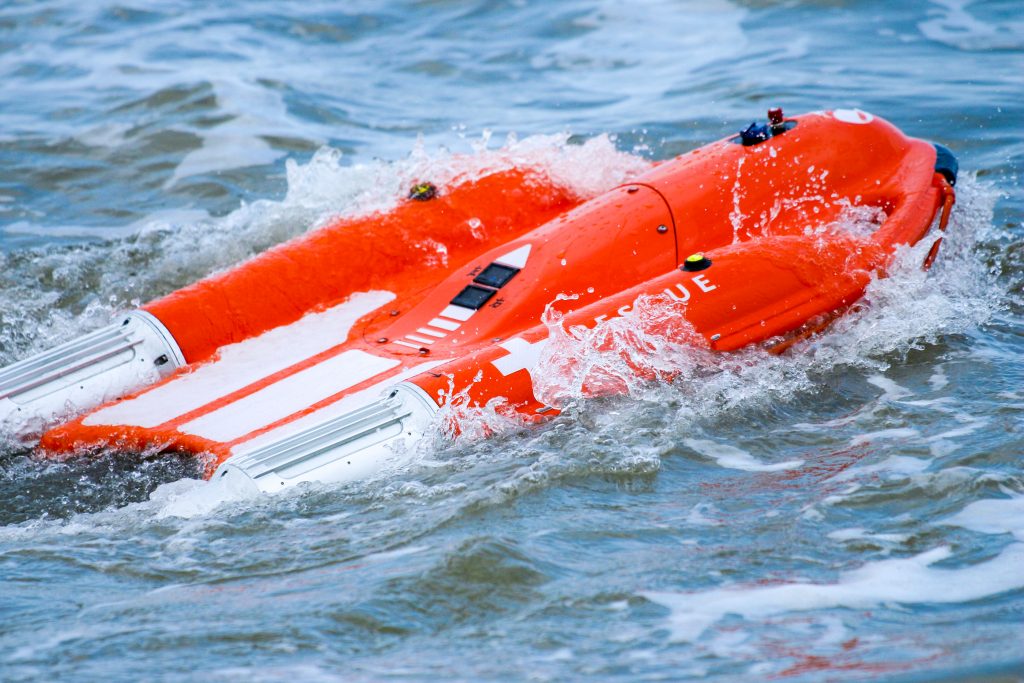

And they stopped at this option:

Dolphin 1 does not have a special charging station, it is assumed that after the batteries are exhausted, each time the device must be manually connected to an external power supply system, and after the charging process is completed, it must be returned to a special place in the rescue post for combat duty.
Placement options "Dolphin 1":


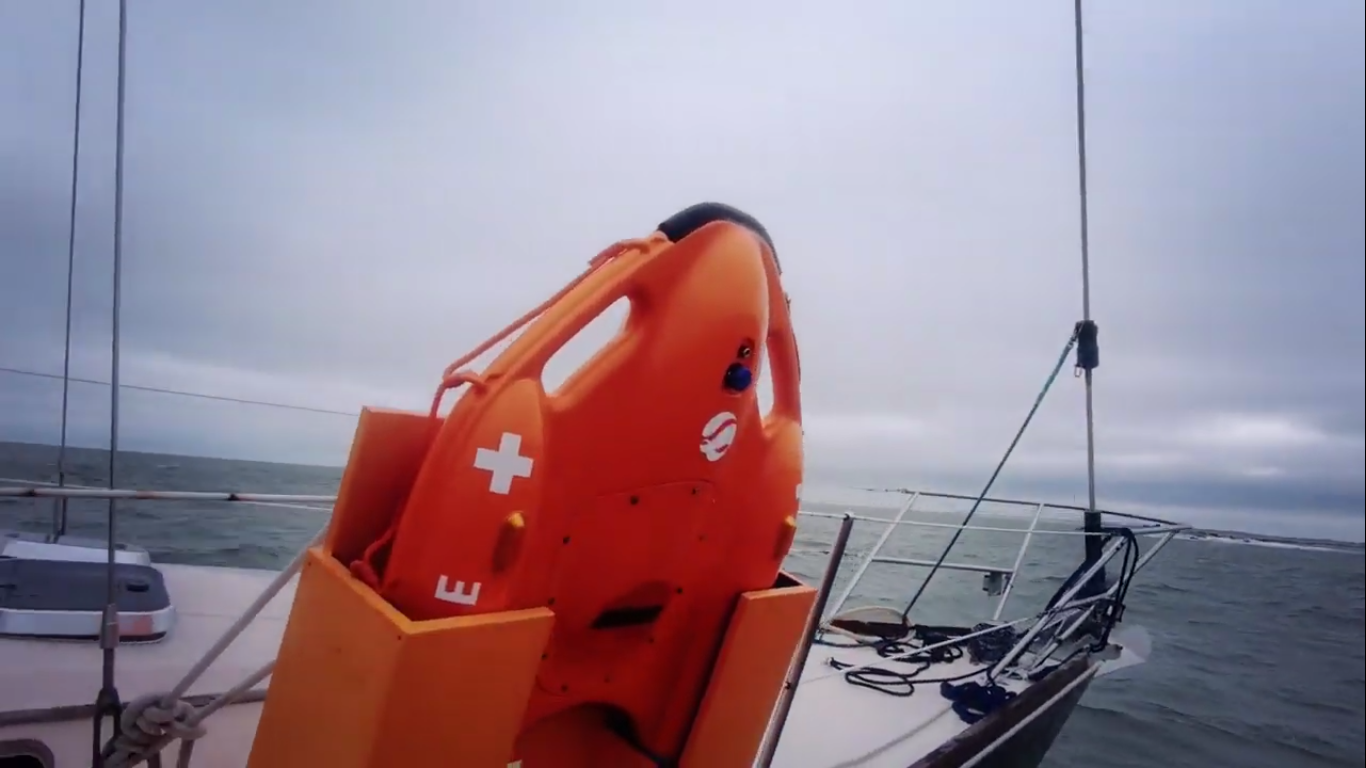
Operating modes of the device: remote-controlled by the operator, manual mode.
The principle of operation of the remote water rescuer "Dolphin 1":
- after the rescuer warning about the occurrence of a dangerous situation on the water, the rescuer takes out Dolphin 1 with his hands from the place of storage;
- further, "Dolphin 1" is thrown into the water in the direction of its direction of motion;
- lifeguard (operator) turns on Dolphin 1 engines using a remote control;
- lifeguard (operator) directs “Dolphin 1” to the place where help is needed on the water;
- if during the fast movement of Dolphin 1 along the waves it flips over, the rescuer (operator) can use the remote control to turn Dolphin 1 back (here, a certain engine mode is used for this situation);
- after the arrival of “Dolphin 1” to the place where help is needed on the water, the rescuer (operator) with the help of a standard video camera on “Dolphin 1” can assess the situation, and the drowning man can grab hold of “Dolphin 1”;
- as soon as a person in the water is fixed on “Dolphin 1”, the rescuer (operator) returns “Dolphin 1” to the place of deployment of the rescue boat or tent and provides assistance to the victim already ashore.
Flip Mode:
Handles for carrying the device:

Lifeguard throws “Dolphin 1” into the water:

Operator with remote control:
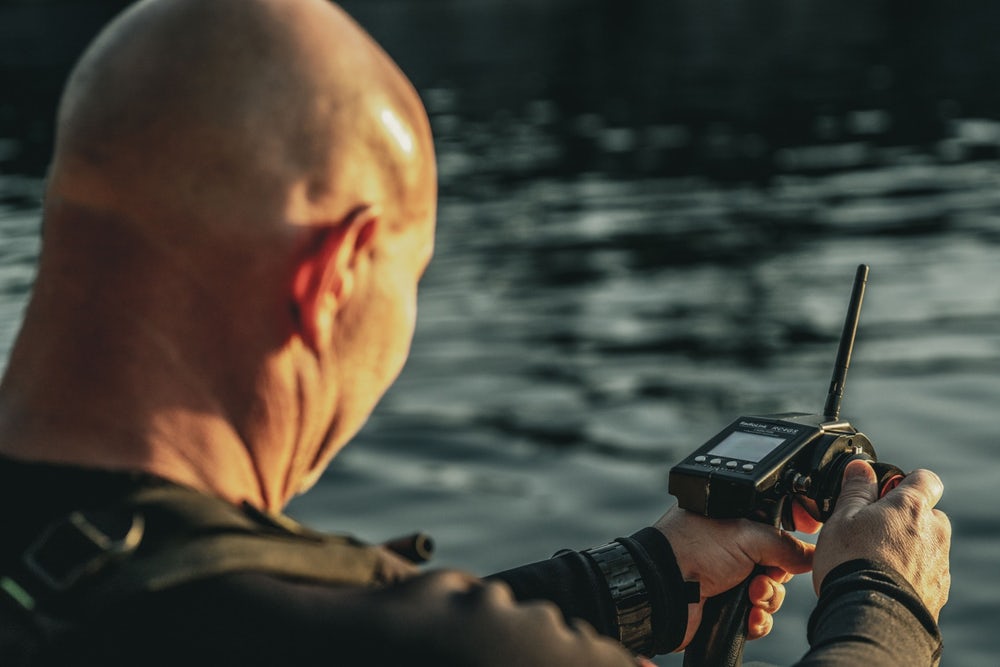
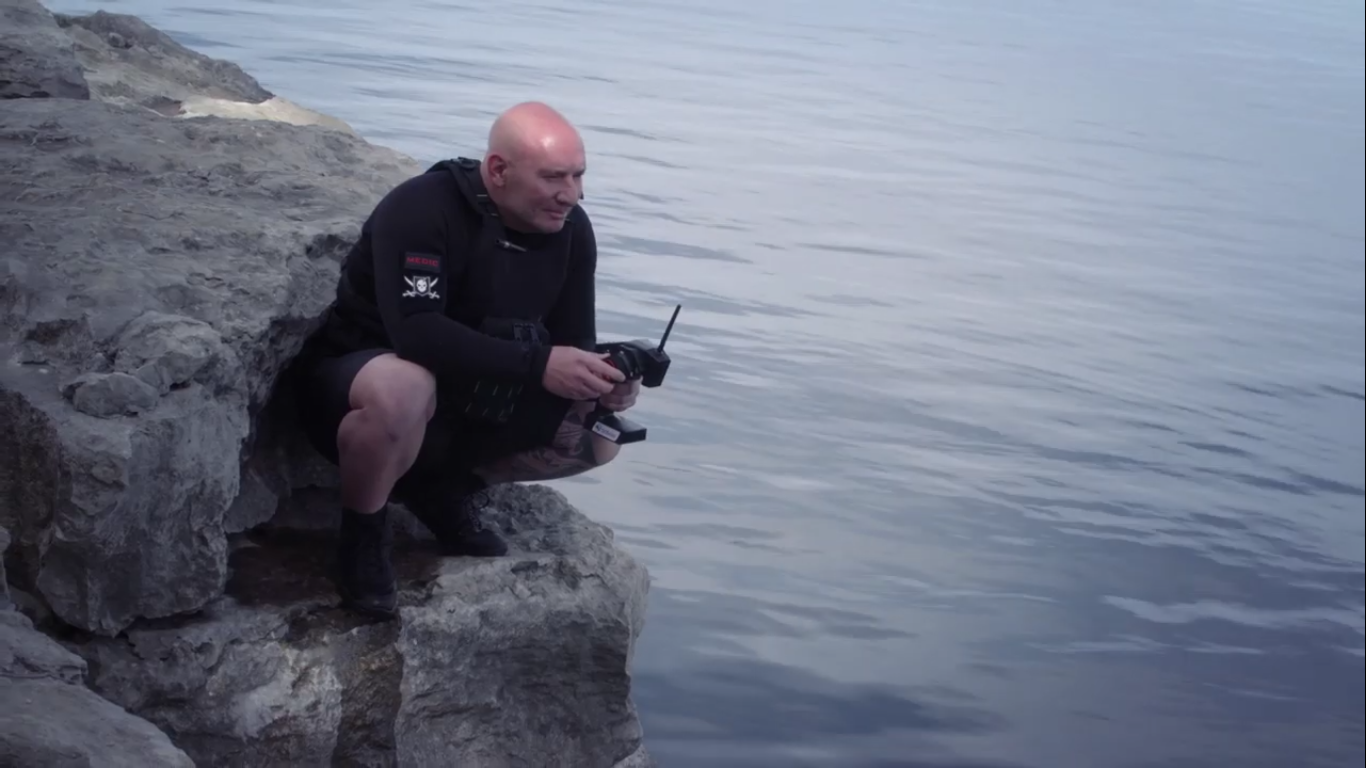
Controls “Dolphin 1” using the remote control:
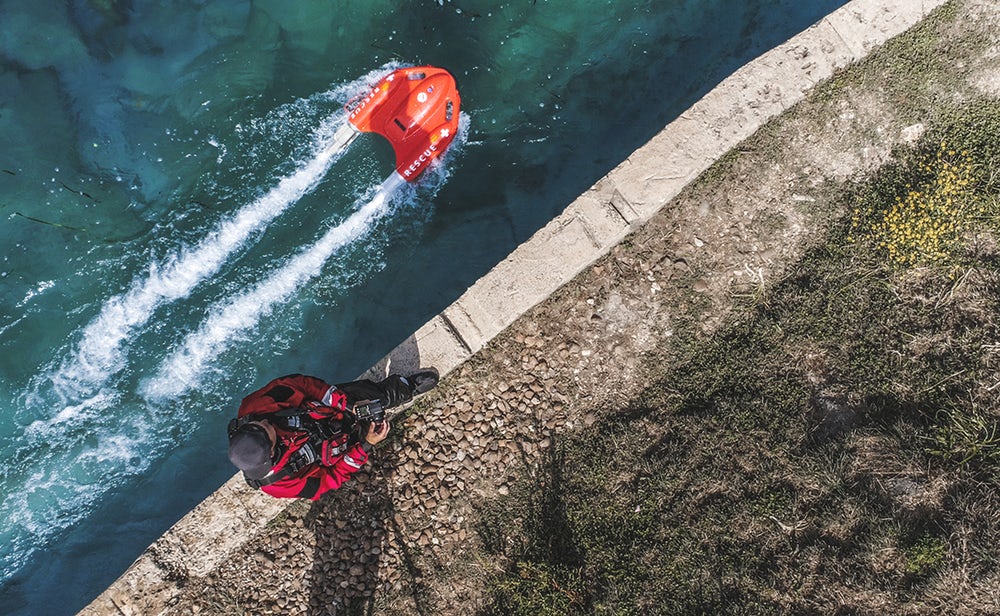


An injured person grabs Dolphin 1 in the water:


Lifeguard (operator) guides “Dolphin 1” with injured to the shore:

A lifeguard meets and raises a victim to the shore: A

lifeguard takes Dolphin 1 out of the water:

Dolphin 1 slides on water and waves:


The Dolphin 1 remote lifeguard is already in mass production and is available for purchase at the recommended retail the price is 5500 dollars .

Link to the device manufacturer’s page .
